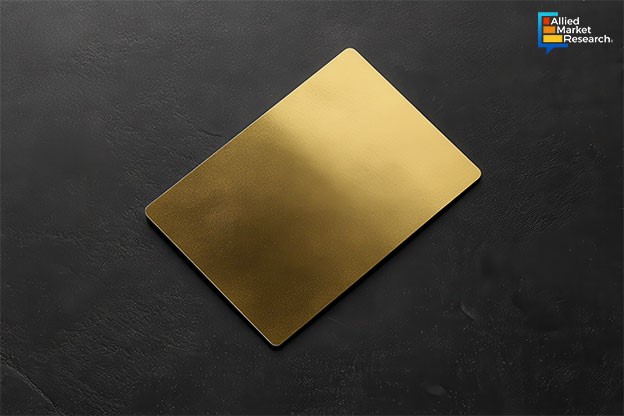Smart Card Materials: Understanding the Basis of Secure Transactions

3 Apr
2025
Highlights:
- Introduction
- Components defining smart card performance
- Developments in eco-friendly materials
The materials used in smart cards play an important role in ensuring their durability, security, and efficiency. These cards are widely used in banking, telecommunications, identity verification, and transportation. With billions of smart cards produced each year, selecting the right materials is essential to meeting industry standards and customer expectations. The durability of these materials ensures that the cards can withstand frequent use without damage. Additionally, material quality directly impacts the security of data stored on the chip, making it important for businesses and governments alike.
Key Components That Define Smart Card Performance
A smart card consists of multiple layers, each serving a specific purpose. The outermost layer is usually made of polyvinyl chloride (PVC), polycarbonate (PC), or acrylonitrile butadiene styrene (ABS). These materials are selected for their durability, resistance to wear and tear, and ability to withstand various environmental conditions. Inside the card, an embedded microchip and antenna allow for secure data storage and transmission. The choice of chip materials, including silicon, determines the processing power and security level of the card. To further enhance security, manufacturers are also incorporating additional protective coatings and layering techniques that prevent physical tampering. Advances in microchip technology have enabled faster transaction speeds and greater storage capacity, making smart cards more efficient for various applications.
Advancements in Secure and Eco-Friendly Materials
In recent years, manufacturers have started exploring environmentally friendly alternatives to traditional plastic-based materials. Biodegradable and recycled materials are gaining attention as companies focus on sustainability. Some businesses are developing smart cards using bio-PVC or PET-G, which offer reduced environmental impact without compromising performance. Additionally, the integration of anti-counterfeiting materials, such as holographic overlays and laser engraving, enhances security features to prevent fraud and unauthorized duplication. With the implementation of stricter environmental regulations, companies are prioritizing material innovation to align with global sustainability goals. The move toward green materials is also driven by rising consumer demand for eco-friendly products, leading businesses to use sustainable practices in their supply chains. The smart card materials industry is expected to gather a revenue of $1.7 billion by 2033. The market accounted for $1.4 billion in 2023 and is projected to rise at a CAGR of 3.9% during 2024-2033.
The Role of Manufacturing in Meeting Industry Standards
The production process of smart cards involves precise engineering and strict quality control. Companies like SecureID are investing in advanced manufacturing facilities to enhance production capabilities and security measures. In February 2024, SecureID hosted an industry event, showcasing its smart card production plant and the latest innovations in secure transaction solutions. The company emphasized the importance of localizing production to improve supply chain efficiency and meet regulatory compliance requirements. Precision in manufacturing is important to ensuring that smart cards function correctly, especially in financial and identification applications where security breaches can have serious consequences. By adopting automated processes and AI-driven quality control systems, manufacturers are further improving production consistency and reducing defects.
Growing Demand for High-Security Payment Cards
Payment cards are dominating the industry, with a reported 3.2 billion smart payment cards and modules shipped globally in 2023, according to the Smart Payment Association. Financial institutions are increasingly adopting dual-interface cards that support both contact and contactless transactions. The demand for metal cards, which offer enhanced durability and premium user experience, is also on the rise. This shift is prompting manufacturers to refine material compositions and introduce new production techniques to enhance card longevity and functionality. The transition toward biometric-enabled cards, incorporating fingerprint scanning for authentication, is also reshaping how security is approached in the industry.
Key Factors Influencing Material Selection
Choosing the right materials for smart cards requires balancing cost, security, and durability. High-security applications, such as government-issued ID cards and access control badges, demand tamper-resistant materials that can prevent unauthorized modifications. At the same time, financial constraints often lead manufacturers to seek cost-effective solutions without compromising quality. The introduction of advanced printing technologies and high-strength coatings is helping businesses address these challenges effectively. Additionally, considerations such as resistance to extreme temperatures, flexibility for dual-interface cards, and recyclability have become more prominent in the decision-making process. Manufacturers are also conducting extensive testing to ensure that the selected materials meet international standards and industry regulations.
Future Possibilities in Smart Card Innovation
Material innovation in the smart card industry is evolving. While plastic remains the dominant material, research into alternatives such as composite materials and flexible electronics is gaining traction. With the growing adoption of biometric authentication and multi-function cards, the need for highly durable and adaptable materials is expected to influence future production trends. Companies investing in research and development are likely to play a key role in advancing the next generation of secure smart card solutions. Additionally, integration with emerging technologies, such as blockchain-based security and AI-driven fraud detection, is projected to enhance the functionality of smart cards. With such innovations on board, businesses are advised to adapt to new regulatory requirements and consumer expectations, ensuring that smart cards serve as a secure and reliable tool in various industries.
Contact our experts to learn about numerous investment opportunities in the sector!

Koyel Ghosh
Author’s Bio- Koyel Ghosh is a blogger with a strong passion and enjoys writing in miscellaneous domains, as she believes it lets her explore a wide variety of niches. She has an innate interest in creativity and enjoys experimenting with different writing styles. A writer who never stops imagining, she has been serving the corporate industry for the last five years.
Avenue: Entire Library membership of Allied Market Research Reports at your disposal
- Avenue is an innovative subscription-based online report database.
- Avail an online access to the entire library of syndicated reports on more than 2,000 niche industries and company profiles on more than 12,000 firms across 11 domains.
- A cost-effective model tailored for entrepreneurs, investors, and students & researchers at universities.
- Request customizations, suggest new reports, and avail analyst support as per your requirements.
- Get an access to the library of reports at any time from any device and anywhere.
Related Post
-
How are Submarine Cables Transforming Global Connectivity with Enhanced User Experience?
-
Endoscopy Procedures: Transformations in Techniques and Applications
-
AI-Powered Video Analytics: How the Product Actually Works for enterprises
-
Painting Robots: Transforming Precision Coating and Creative Applications
-
Innovations in Pharmacovigilance Systems Advancing Patient Safety
-
Understanding Edge Security: Keeping Data Safe Near the Source
-
Exploring the Use and Advancements of 3D Laser Scanners in Professional Applications
-
Reinforcing Industrial Controls with Smarter Tools and Training








